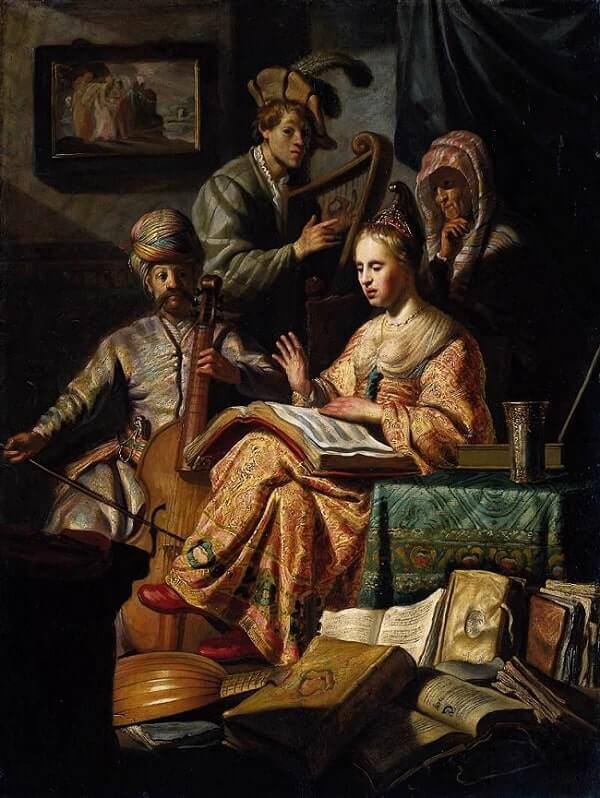Music Allegory, 1626 by Rembrandt

On the face of it, the theme of Music Allegory is straightforward enough: a music party in an interior, a common subject in Dutch art, though one to which Rembrandt himself would never return. Three figures - a seated young woman singing, a man playing a bass gamba and a standing youth playing the harp - make music while an older woman listens on. Yet questions immediately arise when one considers their costumes and the surrounding still-life objects. The singer wears an oriental dress, red shoes, tiara and white veil ' through which her breasts are plainly visible. The gamba player sports a silk kaftan and turban, the youth an elegant jacket and plumed hat, and the old woman an oriental shawl over her head. Scattered before them are tattered books and a lute, while on the table at the left is a viola da gamba and, on that at the right, a gilt wine goblet and open clavichord. Such an arrangement of books, musical instruments and precious vessels is frequently encountered in Dutch vanitas still lifes of this period, especially those from Rembrandt's native Leiden, and accords with the musical theme of the painting in symbolising transience. On the background wall is a picture of Lot leaving Sodom with his two daughters, who will eventually bear him two sons in an attempt to perpetuate the human race (Genesis 19:1-38).12
This theme of illicit love provides a clue to the picture's likely meaning. For the presence of a fashionably clad young woman, wearing a daring decolletage, accompanied by an older woman and two men, immediately calls to mind the familiar theme of the procuress in Dutch art, especially that of the Utrecht Caravaggisti, where a young woman's favours are secured for her male clients by an aged crone like the one in Rembrandt's picture. The theme of venal love is reinforced by thet sexual connotations often associated with the playing of stringed instruments, both in the positioning of the gamba and the suggestive gesture made by the harpist's fingers. The raised hand, red shoes and thinly veiled breasts of the young woman signal her as the focus of attention, and the themes of the transience of both love and life itself are elaborated in the panoply of objects that surround the group.




















